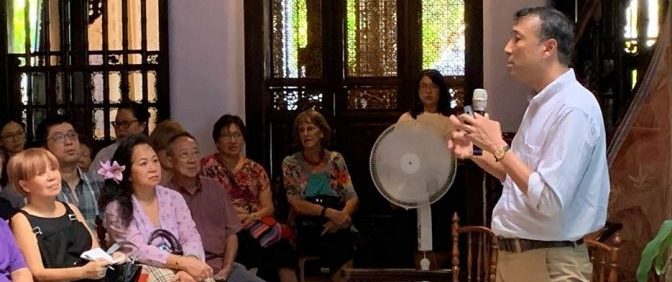…by Dr Marc Rerceretnam, principal researcher, Yesteryear Heritage Researchers
The year 2019 is historically significant in Singapore. It marks the bicentenary of the founding of a modern trading outpost on the island. Although evidence of strong commercial activity goes back as far as the 14th century, by 1819 the island had reverted to a sleepy settlement. This year’s bicentenary in Singapore celebrates the beginning of its continued success as a social, economic and political hub in Southeast Asia.
In January 2019, I began a six-month Research Fellowship with Singapore’s National Library Board. As part of my project, I planned to extend my 2012 paper[1] on race mixing and intermarriage in 19th century Singapore to show how early Singaporean communities were much more resilient, inclusive and integrated than previously recognised given the racial polarisation under British colonial rule. I decided among the best candidates to gauge levels of integration were the then newly emerging Christian church communities because, unlike other religious or secular organisations that were regionally, gender or ethnically aligned, the Christian churches tended to accept people from all backgrounds. They also kept excellent records.
Delving into 190-year old archival records is exciting enough. Still, I was not prepared for what I found. I didn’t find a handful of intermarriages; I found masses of them: up to 33% of all marriages held between 1834 and 1858 were racially mixed! These marriages were largely Asian-to-Asian marriages. European-Asian marriages did exist but were still relatively rare, as most colonial British and Europeans tended to treat local Asian communities with condescension. Indeed, it was not uncommon to come across British or European males with several mistresses or even a harem. Their illegitimate off-spring were often abandoned. Asian-to-Asian unions seemed more genuine and permanent. Within the newly formed churches, these unions were common among newly arrived China-born male migrants. Most tended to marry local-born girls from Melaka, many of whom were 16th century descendants of Portuguese colonialists. Melaka is located 205km from Singapore, with many migrating from there to Singapore immediately after 1819. Others of the Chinese-born men married local-born Malay girls.
Such intermarriages (Chinese with locals) are referred to as Peranakan unions. The Peranakans have long been regarded as an ethnic group descended from early Chinese, Indian or Arab settlers (among others) who came to the Southeast Asian region to trade. Far from home, they settled in these new lands, married and had children with local women. This practice potentially dates back to at least the 10th century, with strong evidence from the 16th century. These communities were widespread, established and harmoniously embedded within socially pliable indigenous communities in their host countries of settlement. In the Malayan archipelago (now Malaysia and Singapore) these communities were dominated by Peranakan families of Chinese lineage. This was especially so in Melaka, Penang, Singapore and parts of Indonesia.
Today, the popularity of identifying as a Peranakan has burgeoned, though why is hard to explain. It could roughly be equated with the dubious but recent thrill an Australian gets when they find they are descended from a ‘First Fleeter’. While Peranakan communities dominated social, economic and political life during the colonial period, the prestige associated with being one greatly diminished after the Second World War and the advent of independence in the 1950s. However, in the last 15 years, there has been a revival in Peranakan culture and heritage. My recent historical find of evidence of a Singapore-specific Peranakan community is attracting keen interest. Up to this point in time, historians believed all Peranakans in Singapore migrated to the island from elsewhere in the region. I have been presenting my findings at public events in Singapore, with the next scheduled for the Roman Catholic Archdiocese of Singapore on Wednesday 26 June 2019 My paper will be published in the Singapore National Library‘s research journal ‘Chapters on Asia’, ‘BiblioAsia’ and ‘The Peranakan’ magazines in the coming months.
For more information on my work, please go to my Facebook page ‘Yesteryear Heritage Researchers’ or email, marc@YesteryearResearchers.com.au
[1] ‘Intermarriage in colonial Malaya and Singapore – A case study of late 19th and early 20th century Asian Christian communities’ , Journal of Southeast Asian Studies,Vol. 43, No. 2, June 2012.

Interesting piece. Eurasians were the product of intermarriage here on our island. Apart from the Peranakan; we should be included as part of your study. Ann Ebert Oehlers